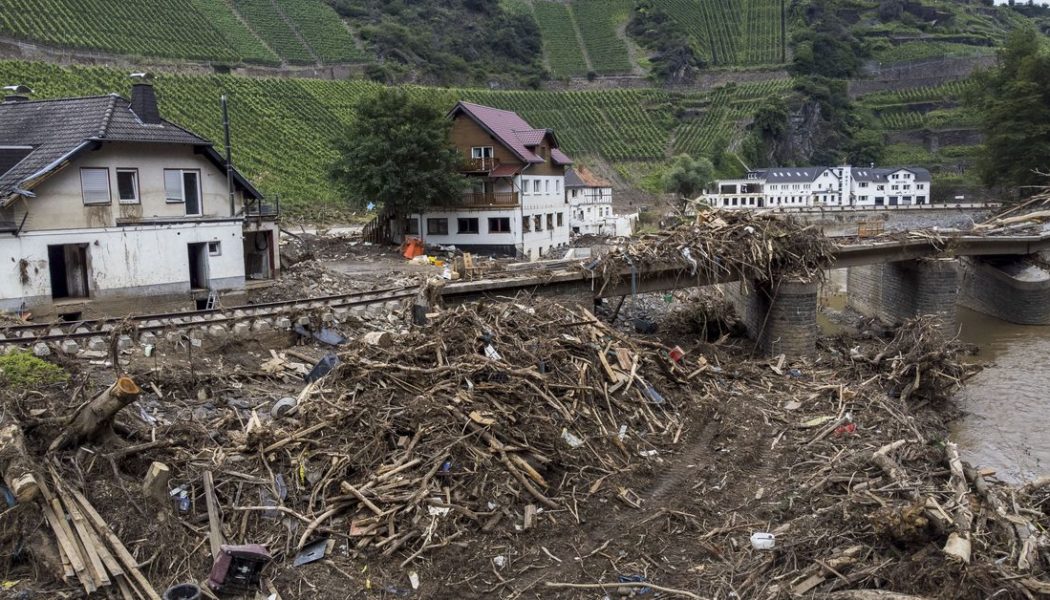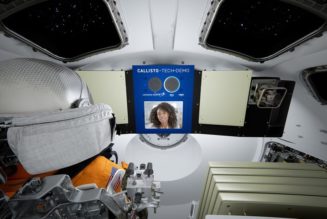/cdn.vox-cdn.com/uploads/chorus_asset/file/24116458/1332385123.jpg)
Earthquake sensors can detect fast-moving floods barreling toward them, new research finds. That information is especially valuable to people working on early warning systems for floods, which could give people crucial time to get to safety, preventing deaths and flood damage, according to the authors of a recently published paper.
Communities in Germany’s Ahr Valley experienced a devastating flood that washed away homes and killed almost 200 people in July 2021. Studying that disaster, the researchers discovered that a nearby seismometer station — intended to monitor earthquakes — detected valuable details about the flood as it was happening.
“If the data stream from that station had been available and analysed as our research now shows, essential real time information on the magnitude and velocity of the flood would have been available,” Michael Dietze, lead author of the new research and a postdoctoral researcher at the University of Göttingen, said in an American Geophysical Union news release.
“The current network of water level stations is not enough to be adequately prepared for future events”
It’s only one case study, but the researchers think that other existing earthquake sensors — like the one studied in Ahr Valley — could also be used to detect similar catastrophic flooding in the future. That could be a game changer for other flood-prone places because “the current network of water level stations is not enough to be adequately prepared for future events,” Dietze said.
Following record-breaking rainfall in July 2021, floodwaters strong enough to knock structures off their foundations also wiped out three hydrological stations used to measure water levels along the Ahr river — quickly rendering the river gauges useless as the river continued to swell. As water levels rose exponentially, “the lack of information about any of these dynamics left decision makers essentially blind folded,” the new paper says.
The seismometer, on the other hand, was able to safely sense the flood’s movement from about 1.5 kilometers away. Not only did the sensor survive, but it was also able to gather more holistic data than the hydrological stations would have been able to collect even if they had stayed standing. That’s because most river gauges are limited to measuring water levels. The earthquake sensor, on the other hand, can read seismic signals to estimate water level and flood velocity and even what dangers the floodwaters are carrying — like cars or the rubble of destroyed homes.
“Which parts of settlements are likely to be inundated? How much debris does the flood transport? How fast does the water flow? Where is the flood front at a given time?” Those are all questions the seismometer could have helped answer as the flood was happening, the paper says.
While this study looked specifically at Germany’s 2021 flood, its findings could inform future efforts to give people early warnings ahead of floods in the Ahr Valley and in regions with similar topography. In many parts of the world, water level gauges are few and far between. If they are present, they’re easily destroyed by raging floodwaters. Plus, the data they gather is usually limited to water levels only and typically comes with a time delay between intermittent readings. Because of all those factors, the researchers make the case that it makes sense to back them up with existing seismic sensors, which are already designed quickly to pick up on unusual rumblings.
A dearth of early warning systems is a global problem
Of course, the more seismic sensors, the better the data is for giving people a heads-up of the danger coming their way — whether that’s from earthquakes, floods, or associated landslides. So existing networks of earthquake sensors would need to be beefed up with additional sensors and equipment to serve all those purposes. In the Ahr Valley and the rest of Europe’s topographically similar flood-prone zones, that could be done for a tiny fraction of the tens of billion euros of damage caused by the 2021 disaster, according to the paper’s authors.
But a dearth of early warning systems is a global problem, the United Nations warns. Just half of the countries around the world have adequate early warning systems for natural and climate-driven disasters, according to an October report. The lack of life-saving information is even worse in lower-income countries. The report was completed as Pakistan suffered from catastrophic floods that claimed the lives of 1,700 people.
“Entire populations are being blindsided by cascading climate disasters without any means of prior alert,” UN Secretary-General António Guterres said when the report was released. Scientists have found that both the floods in Pakistan this year and in Germany in 2021 were exacerbated by climate change. With the climate crisis worsening, the need to give people adequate warning ahead of similar disasters is growing even more urgent.








